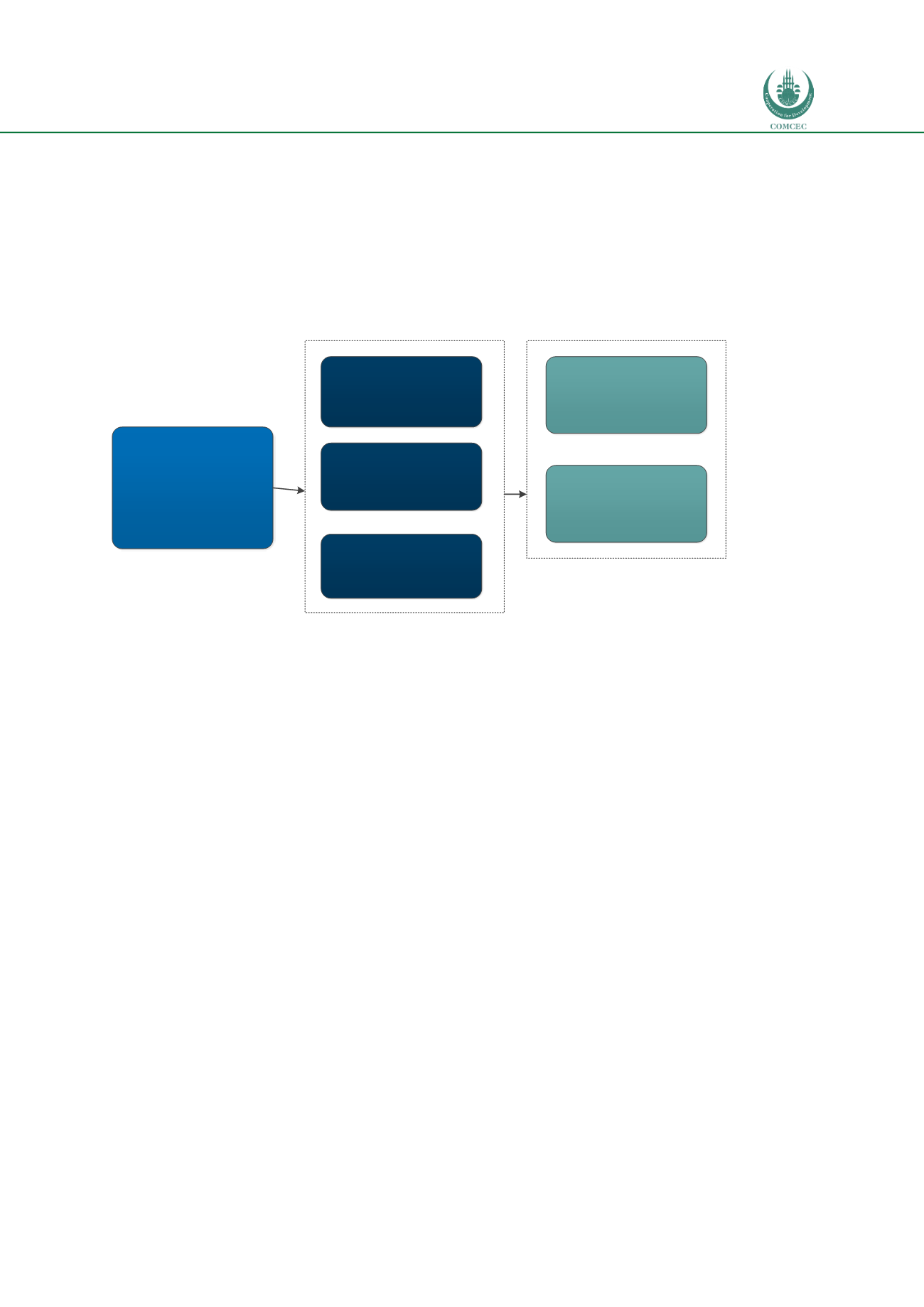

Governance of Transport Corridors in OIC Member States:
Challenges, Cases and Policy Lessons
143
Annex 2
Methodological approach
General approach
The methodological approach for the study is built on two distinct phases, i.e. the data collection and
the synthesis phase, as presented in the figure below. The data collection phase consists of literature
review, surveys and field visits and the synthesis phase consists of drafting conclusions and
recommendations and the presentation of results.
Figure A.2.1 Methodological approach
Teammobilization
Agreed approach and planning
Questionnairesand target
groups
Outlineof conceptual
framework ofthegovernanceof
multinational transport
corridors
Outlineof Final Report
Study Outlineand Plan
Inventory ofrelevant
documentation, identifying
main governance concepts
Review of relevant
documentation, summarizing
theoretical background
Analysisof results from data
collection
Define conclusions and
recommendations for achieving
enhanced governance practices
for corridors
ProduceFinal Report
T0: Inception
Data collection phase
Synthesis phase
T1: Desk Research
T4: Conclusions and recommendations
Development ofonline survey,
including questionnaire
Implementation of online
survey and optimizing response
Analysisof responses
PowerPoint presentation
highlightingthe project’s
conclusions and
recommendations
Presentation duringthe 11
th
meetingat COMCEC (March
15
th
, Ankara)
T2: Surveys
T5: Presentation ofresults
Development of interview
scripts for case studies
Field visitsto Turkey,
Kazakhstan, Mozambique and
Jordan (proposed)
T3: Field visits
Source: Ecorys.
Data collection process
Desk research
Desk research provides the ingredients for developing a framework for governance of transport
corridors, based on international best practices, and a review of governance of transport corridors in
OIC member countries compared to other countries. The review makes use of published reports and
documentation.
Literature review entails a number of tasks, as indicated in the ToR, namely:
National strategies and plans in line with transport corridor governance;
The list and coverage of thememorandumof understandings and bilateral/multilateral agreements
signed to enhance the governance of the corridors;
The organization, responsibilities, and working principles/procedures of the joint committees,
panels, and other comparable groups formed by the partner countries of the transnational
transport corridors;
The harmonization of domestic regulations/standards when necessary;
The organization and characteristics the of dedicated management units (secretariats and other
central bodies) regarding Transnational Transport Corridors. This sub-section should cover the
duties and responsibilities of such management units. In addition, the consultant should examine
the decision-making processes, working principles/procedures, funding mechanisms, and
oversight procedures of these management units;
The extent of the participation of the local authorities and private parties to the governance
mechanisms of the corridor;
The data and statistics collection mechanisms and methods;
The sources of finance to effectively ensure the governance;
The use of one-stop shop concept in the corridor governance and management;
The actions taken by the management of the corridor to handle the infrastructure bottlenecks;
















